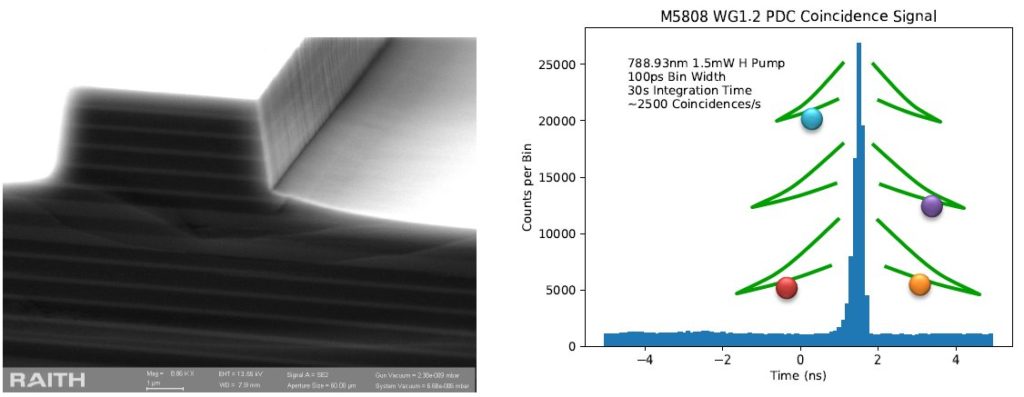As Christmas Eve nears, things are becoming more and more hectic in Santa’s lab. As this year has led to many people having to celebrate the holidays separated from friends and family, Santa has come up with a special plan. Wouldn’t it be nice if there were an (almost) magical way that two very distant things could still be connected? Being the nifty, wise man Santa is, he decides to send every single child in the world a photon of an entangled pair so they may feel connected to another child. But if he wants to create entanglement for every child in the world, he better hurry up.
Luckily, his herd of little Rudolfs moves at the speed of light and is up for the challenge. He sends them, noses lit up in the near infrared, into an AlGaAs Bragg-reflection waveguide. The waveguide serves a double purpose: at some point in the waveguide, each Rudolf with a red glowing nose will spontaneously turn into two super stealthy reindeer with telecom noses. These are perfectly adapted to travel in the networks set up by humans, meaning that no reindeer will have to be left behind on the way to the children. In addition, the waveguide also guides the reindeer, the ones with a red nose and the stealthy telecom ones, on their way through the waveguide until as many of them as possible have been transformed. And it ensures that they exit the waveguide at the same point, ready to start their travels.
Santa has just finished characterizing his newest Bragg-reflection waveguide, proudly made in his own cleanroom. The waveguide can help 2500 Rudolfs per second transition into a pair of telecom reindeer. So to supply the 2.35 billion children in the world, he will need about 130 hours. A bit tight on Christmas Eve alone, but luckily, Christmas is celebrated over multiple days in different countries.
So if you receive a little reindeer this Christmas, be sure to treat it well and it might just reveal something about its partner somewhere out there under some other family’s Christmas tree.

A Bragg-reflection waveguide etched in Innsbruck (left) and the coincidence signal measured
from telecom photon pairs produced via parametric down-conversion in that waveguide (right).